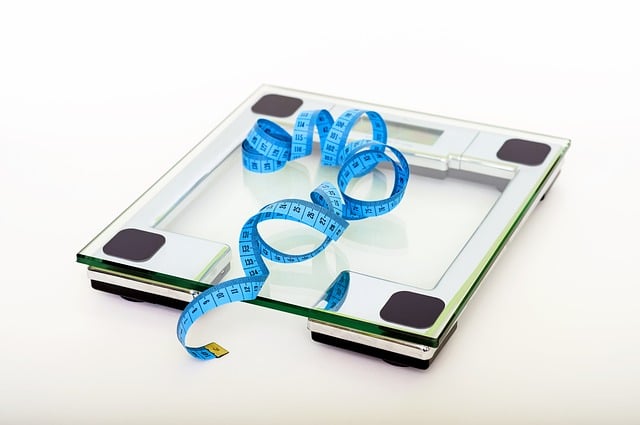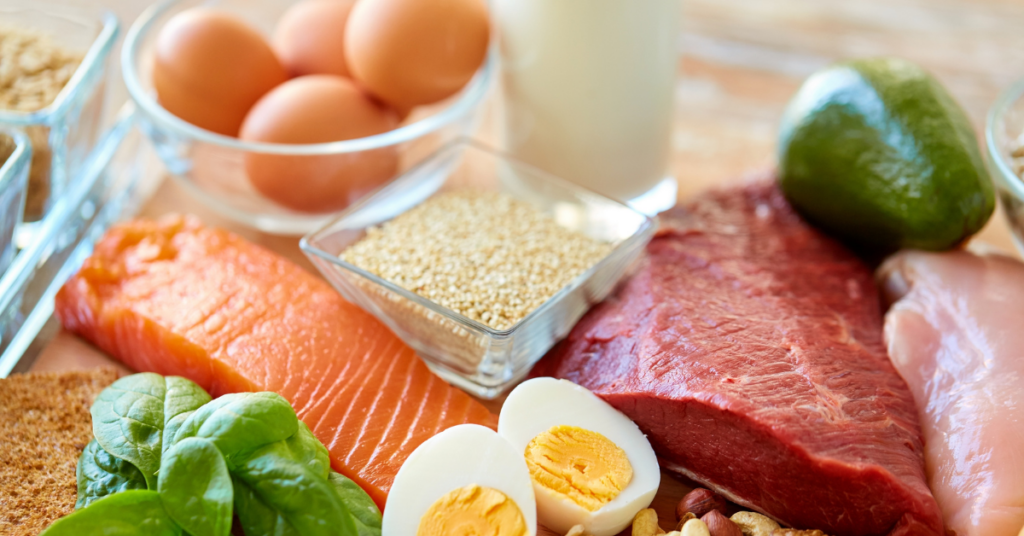“I’ve done everything. I just can’t drop the weight. It’s got to be my slow metabolism. I’m getting older, you know. That’s why it’s so hard to lose weight.”
I could tell you about how I had an exchange with a client this past Monday where that line got used. Or I could tell you about my Thursday check-ins where it got used. Or maybe I could tell you about how I read a line very similar to that one in the Facebook group last Wednesday. In fact, it’s not a stretch to say that each and every day, somewhere with the Stronger U Empire, there’s a variation of that line that gets used.
Here’s a secret: when most coaches read that sentence we all deal with this nearly involuntary need to sigh loudly, roll our eyes, and mutter under our breath about how much we hate nutrition myths.
Then we roll up our sleeves, crack our knuckles, and get to educating like good coaches do. It’s not your fault that you fell victim to some nutrition myth. Heck, it’s our job to work on the front lines and strike those myths down one by one. And it’s about high time we do some educating when it comes to metabolism and whether or not you’ve got a slow one.
Slow metabolisms: do you have one?
Most everyone has dealt with some sort of weight loss plateau. You feel like you’re doing everything right, and out of nowhere, the scale stops moving. What gives?
Generally, this is where we play the blame game and decide that our metabolism has to be the culprit. It makes intuitive sense. Metabolism has to be why some people can lose weight while eating terrible foods, and others gain weight by looking at an apple the wrong way.
Like most things in life, metabolism isn’t that simple.
What is metabolism?
Metabolism– a: “The sum of the processes in the buildup and destruction of protoplasm; specifically: the chemical changes in living cells by which energy is provided for vital processes and activities and new material is assimilated”
Okay, so while nice to know and possibly both fun and annoying to use as a party trick, that doesn’t really tell us what we want to know, though. Metabolism can be broken down into various components.
BMR: The most basic form is Basal Metabolic Rate, or BMR. This baseline metabolic rate is the amount of calories someone burns each and every day to maintain life.
Just living requires quite a bit more energy than we think. There are thousands upon thousands of chemical reactions taking place in our body at any given second. These have to be fueled somehow, which is where we get metabolism. Along with that, something that will always hold true is that the bigger someone is, the faster their BMR. In fact, some research shows that up to 43% of the difference between two people’s metabolisms can be solely attributed to the difference in internal organ size.
BMR is important to understand because someone saying they have a slow metabolism is literally saying they struggle to maintain life. And while that may feel true when you’re fighting a massive hangover or in the middle of a very intense diet, it’s likely not the case. There are very few instances where a truly slow metabolism exists.
Metabolism is more complicated than just BMR though. In reality, when we talk about metabolism what we’re actually talking about is a collection of a few different things all living under the umbrella of Total Daily Energy Expenditure, or TDEE. Living inside the umbrella of TDEE is BMR and a couple of other factors that get added along with it, known as NEAT and TEF.
- NEAT, or non-exercise activity thermogenesis is the calories we burn each day by walking, fidgeting, cleaning dishes, etc. This number varies greatly from person to person, some estimates say as much as 2,000 calories per day per person.
When thinking about just BMR and NEAT and how those contribute to what metabolism looks like on a daily basis is typically enough to explain why some people have a harder time losing weight than others. Smaller and petite women who work sedentary jobs typically have a harder time losing weight compared to a larger guy that works an active job or is on his feet all day not because “he just has it easier” but simply because he burns more calories on a daily basis supporting a much larger and more active body.
- TEF, or thermic effect of food is the calories we burn by digesting foods we eat. One small bonus of eating a moderately high protein diet is that it takes more energy to digest protein than the other macros.
All of these factors combined lead to our TDEE, or total daily energy expenditure. When we’re talking about metabolism, most of us are actually talking about this collection of factors that has been added together.
This TDEE can vary greatly from person to person, with it adding up for the average male to burn around 1,800-2,200 calories per day and the average female burning in the range of 1,500-2,000 calories per day. But even then, it’s important to remember we’re talking about some very loose estimates and some pretty loose back-of-the-envelope type math when talking about metabolism here. There are a number of factors that can play into the makeup of human metabolism, including the fact that metabolism is actually highly dynamic. Meaning it’s really changing day in and day out, hour after hour.
So where did we get slow metabolism?
I wished I could take a really deep journalistic dive and point out the first time that slow metabolism appeared in print, but unfortunately, that’s pretty hard to track down. However, we can probably say that the idea of having a slow metabolism probably stems from the fact that as we age we lose lean muscle mass, and our metabolic processes tend to slow. These factors combine to cause a decrease in metabolic rate by about 2-5% per decade, or anywhere from 40 – 125 calories.
Now, there’s no denying that this has a cumulative effect, especially since we see these declines seem to start happening after the age of 20. However, it’s important to remember that’s still painting with some very broad brushstrokes. And even then, it doesn’t change the fact that most of us understand that our metabolism slows as we age, but we often grossly overestimate that number. Especially when factoring in the favorable impact to metabolism that strength training provides.
Gender differences and metabolism.
One of the biggest things I hear from female clients is how much more difficult it is for them to drop weight because they have a slower metabolism, and this is true. Females have less muscle mass and a slower metabolism than their male counterparts.
The difference isn’t big enough to become that valid of an excuse, though. The difference in BMR between a male and female is about 5-10%, after adjusting for differences in body composition, which can play a major role. Because those individuals who have more muscle mass are going to have a higher metabolism than someone who is a similar weight but has less muscle mass.
Or, put another way, for someone who burns 2,000 calories per day, we’re talking about the difference of 100-200 calories per day.
If a slow metabolism isn’t stopping you from losing weight, what is?
The majority of the people who are worried about slow metabolism are understandably people who are also concerned with losing weight. They’ve probably dieted before, and know how to eat well. Hell, most report that they don’t eat poorly, to begin with.
They also don’t understand just how much they’re actually eating. We are simply just downright awful at gauging our caloric intake, at least until we hone that skill through consistent tracking. In our world of widely available hyper-palatable food, we’re downright terrible at estimating how much we eat.
How off? When tested, we’re often off by about 50%. That’s the difference between eating 2,000 calories per day and 3,000, or eating your normal daily food intake, and then adding a large Blizzard from Dairy Queen. No wonder weight loss seems impossible.
What can we do instead?
Losing weight can seem like a nearly impossible task at times, I get that. It’s hard, and it can feel deeply confusing. Amidst that confusion, most of us miss the forest for the trees though. We’re focused on timing our carb intake, eating certain foods, avoiding others, or trying the newest supplement.
There are three tools that have always worked, and will always work when it comes to dropping fat and keeping it off.
-
Food logging.
One of the most valuable tools to helping someone understand how much they’re actually eating is by using a food log – and there’s a reason we talk about it so much at Stronger U. By logging your food you remove the possibility of accidentally eating an extra 1,000 calories, and you create a running log of data to look back on. Through consistently logging your food you write a history of your eating habits that you get to look back on, judge objectively, and improve.
Plus on top of all of that, it allows you to actually control the variable of calorie intake. For at least a little while you get to treat yourself like a variable in an experiment – holding calorie intake steady, and seeing how another variable, scale weight, behaves. That can tell us some really interesting things, like if we’re on the right path or if we need to make adjustments.
-
Lifting.
Here’s something kind of mind-blowing: research shows that one pound of muscle burns roughly 6 calories per day, at rest. Compare that to one pound of fat, which only burns about 2 calories per day, at rest. Sure, burning 3x the amount of calories may sound like a lot. And in the grand scheme of things, factoring that out across all the muscle you have on your body certainly does help make a difference in terms of metabolism.
But it’s also important that in all reality, we’re not talking about a major difference. So don’t treat lifting as a cure-all for your metabolism. Instead, treat it as something that is good because it helps retain skeletal muscle mass, keeps you strong, and keeps you healthy. Oh, and retaining skeletal muscle mass DOES help prevent the metabolism from slowing down quite so much as you age.
-
General activity.
Remember up at the beginning how I mentioned NEAT, or non-exercise activity thermogenesis? Well, that NEAT is pretty important when it comes to long-term metabolic health and weight loss. Remember, NEAT can vary wildly amongst two different people, so wildly that it can be up to 2,000 calories a day.
NEAT, or just upping your baseline level of activity, can be an easy way to help take care of both your metabolic health and help your weight loss efforts along. It’s certainly not going to be the main cause of your weight loss efforts, that’s for sure. But it can help, especially if you’re not getting much activity in as is.
What should you take away from this?
Slow(er) metabolisms are a real thing. We all have metabolic rates that differ from each other. Yours is going to be vastly different than mine, and mine will be different than someone else’s. Those are all things that make us different, but just because they’re different that doesn’t also mean that we all have to treat our journey’s as being completely different or special.
You may be smaller than some people. You may be less active than other people. All of that is okay. It means you might have a slower metabolism than some other people, or conversely, you might have a faster metabolism. That’s all well and good.
Because even if you do have a slower or faster metabolism than some others, it doesn’t change the fact that the work you have to do to get results is the same work that others have to do. You still have to track your food, work to prep your food, and try to hit your numbers. Because those are behaviors that help anyone reach their goal, no matter who you are or what your metabolism looks like.








